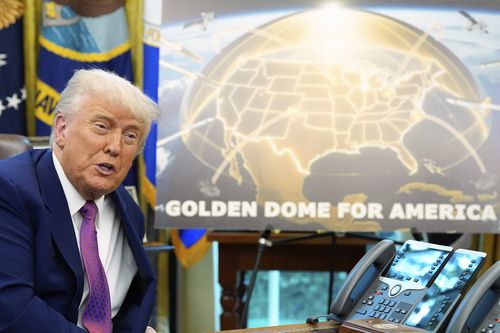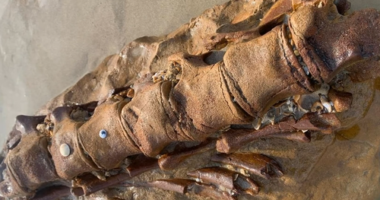Share this @internewscast.com
Trump is likely to reveal his chosen option and its cost in the coming days, which will set a course for securing funding, development, and establishment of the space-based missile defense system over the coming years.
No matter which option Trump chooses, it will come with a hefty price tag; $US25 billion ($39 billion) is allocated in the defense budget for the next year, but the Congressional Budget Office estimates that the US could ultimately spend over $US500 billion over 20 years to develop a feasible Golden Dome.

The initiative will also be a significant opportunity for private contractors since the government alone cannot undertake this task. Companies such as Elon Musk’s SpaceX are in the mix for potentially valuable contracts associated with the system.
The US Department of Defence “has developed a draft architecture and implementation plan for a Golden Dome system that will protect Americans and our homeland from a wide range of global missile threats,” chief Pentagon spokesman and senior adviser Sean Parnell told CNN in a statement.
“The Secretary of Defence and other Department leaders have engaged with the President to present options and look forward to announcing the path forward in the coming days,” Parnell added.
A key part of the implementation plan will be the establishment of a direct reporting program manager â also known as a “golden dome czar” â who can oversee the development and deployment of the highly complex system, according to three sources familiar with the conversations.
General Michael A. Guetlein, vice chief of space operations at the US Space Force, is under close consideration for the role, the sources said, noting he is a four-star general with experience in the procurement of missile defence systems and emerging space-based capabilities.

For now, however, there is still a lot of uncertainty surrounding Golden Dome and what it will ultimately look like.
Another person with direct knowledge of the options said the system would ultimately encompass about 100 programs, many of which already live within the Defence Department or are in development. The one “entirely new” aspect would be the command and control and integration layer of the architecture, this person said.
“There are a lot of different flavours of what this could look like,” said a senior congressional official familiar with the Pentagon’s proposed plans.
A comprehensive missile defence shield is a concept the US has pursued for decades but never realised because of gaps in technology and cost.
Trump has repeatedly insisted the US needs a missile defence program similar to Israel’s Iron Dome, but the systems are orders of magnitude apart. In practical terms, the comparison is less apples to oranges, and more apples to aircraft carriers.

Israel’s Iron Dome missile defence system selectively protects populated areas from short-range threats in a country spanning 20,000 square kilometres, about the size of the US state New Jersey; Trump wants a space-based missile defence system capable of defending the entire US from advanced ballistic and hypersonic missiles.
The Defense Intelligence Agency recently released an unclassified assessment titled “Golden Dome for America,” underscoring how US adversaries such as China, Russia, Iran and North Korea can target the American homeland with a variety of ballistic missiles, long-range cruise missiles, bombers and hypersonic missiles.
The core policy decision for Trump largely centers on next-generation capabilities to defend the US against ICBMs or hypersonic threats, the congressional official added, noting it is clear Golden Dome will require “a “significant research and development effort.”
Developing such a complex system will require establishing a network of government agencies and private contractors, the makeup of which remains unclear at this early stage, multiple sources familiar with the planning process said.











